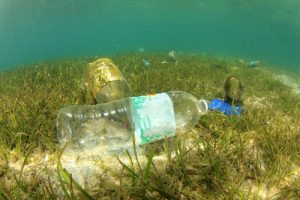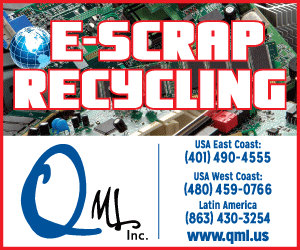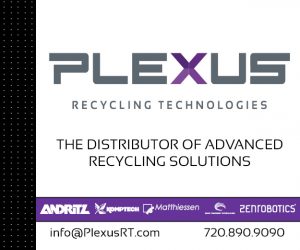 Should California consider whether packaging contributes to marine debris when formulating mandatory policies for its collection and recycling? Your answer likely depends on whether you represent the business community or environmental interests.
Should California consider whether packaging contributes to marine debris when formulating mandatory policies for its collection and recycling? Your answer likely depends on whether you represent the business community or environmental interests.
The California Department of Resources Recycling and Recovery (CalRecycle) recently sought public input on criteria department officials will use to help develop mandatory policies for increasing the recycling of packaging.
CalRecycle sees a mandatory diversion approach to packaging as important to helping California achieve its goal of a 75 percent recycling rate by 2020.
Officials continue to emphasize no decisions have been made, but the department has mentioned extended producer responsibility (EPR) and minimum-recycled-content requirements as tools under consideration. A particularly controversial approach, EPR requires producers to finance the collection and recycling of the products they sell into the marketplace. No U.S. state has EPR for packaging, but Canadian provinces have begun implementing the approach for their residential paper and packaging streams.
Some industry observers maintain that bottle bills are a form of EPR, especially in a state such as Oregon, where the beverage industry manages the details of the deposit program. Possible mandatory policies in California, however, would extend beyond the beverage container realm and affect a wide range of product packaging.
CalRecycle sought feedback and suggestions on screening criteria they could use to determine which packaging types should be prioritized for analysis relative to different mandatory policy approaches. Nearly two dozen responses were submitted, and CalRecycle posted them online.
One question CalRecycle asked was whether it should consider whether different types of packaging end up as waterway and marine debris. Following are the responses dealing directly with that question:
American Chemistry Council:
“Marine debris is not a function of the packaging material, but rather is a litter issue that is tied to the waste infrastructure and consumer behavior.”
American Forest & Paper Association:
“The Department should not consider marine debris as part of the screening criteria. Marine debris is a problem with littering and not with material use. It can be addressed with access to collection and participation by consumers.”
California Ocean Protection Council:
“OPC staff supports CalRecycle’s inclusion of waterway and marine debris as a criterion to prioritize packaging. With an estimated eight million metric tons of trash annually entering the world’s oceans, our marine ecosystems are essentially acting as an unregulated landfill for solid waste. Given that 8 of the top 10 types of items found on California Coastal Cleanup Day fall under the category of packaging, packaging reform can make a significant contribution towards preventing and reducing marine debris in the future.”
Foodservice Packaging institute:
“While decreasing waterway and marine debris is important, it is not directly related to California’s statewide policy goal of not less than 75 percent of solid waste generated be source reduced, recycled, or composted by the year 2020. Reducing litter and marine debris does not mean increased recovery and may therefore distract from the specific task at hand. Given that both commonly and less commonly recycled items are on ‘top littered items’ lists, this does not provide valuable criterion for CalRecycle. Should the state see a decrease in these littered items, there is little chance that CalRecycle could determine whether these items ended up in the recycling stream (and be counted toward the state’s recovery goal) or in landfill.
Grocery Manufacturers Association:
“Marine debris should not be considered. Debris in water is a litter challenge, not a material selection issue. While decreasing waterway and marine debris is important, it is not directly related to California’s statewide waste reduction policy goals. Reducing litter and marine debris does not equate to increased recovery and may distract from the specific task at hand.”
Sonoco:
“Marine debris – while a significant issue – marine debris is a function of activities unrelated to packaging; e.g., consumer littering behavior; number/placement of municipal trash receptacles near beaches and waterways; how frequently they are emptied; covers on haulers; and others. We believe including marine debris as a criterion to justify targeting certain types of packaging sidesteps the real issue of implementation and enforcement of much stronger litter control programs at our beaches, parks and waterways.”
Waste Management:
“WM recognizes waterway marine debris as a serious global and domestic environmental issue. As a U.S. based environmental services company, our well-developed solid waste systems and infrastructure provide waste systems solutions for cities across the country. We work closely with our customers to ensure that their containers and collection frequency is adequate and convenient for effective collection services, thus minimizing the litter that causes waterway and marine debris in the U.S. Education on litter reduction is effective and will always be important.”
More stories about EPR/stewardship
- CAA publishes revised Colorado program plan
- WM outlines investments in recycling infrastructure
- ‘Operational readiness is high’ as Oregon rolls out EPR



